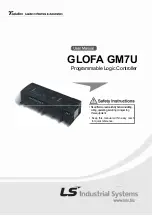
u-blox ZED-F9P Interface Description - Manual
Advance Information
• L: single-bit boolean (true = 1, false = 0), stored as U1
6.3 Configuration Layers
Several
Configuration Layers
exist. They are separate sources of Configuration Items. Some of the layers are
read-only and others are modifiable. Layers are organised in terms of priority. Values in a high priority layer will
replace values stored in low priority layer. On startup of the receiver all configuration layers are read and the
items within each layer are stacked up in order to create the
Current Configuration
, which is used by the
receiver at run-time.
The following configuration layers are available (in order of priority, highest priority first):
•
RAM
: This layer contains items stored in volatile RAM. This is the Current Configuration. The value of any
item can be set by the user at run-time (see
below) and it will become effective
immediately.
•
BBR
: This layer contains items stored in the battery-backed RAM. The contents in this layer are preserved as
long as a battery backup supply is provided during off periods. The value of any item can be set by the user
at run-time (see
below) and it will become effective upon a restart of the receiver.
•
Flash
: This layer contains items stored permanently in the external flash memory. This layer is only available if
there is a usable external flash memory. The value of any item can be set by the user at run-time (see
below) it will become effective upon a restart of the receiver.
•
Default:
This layer contains all items known to the running receiver software and their hard-coded default
values. Data in this layer is not writable.
The stacking of the Configuration items from the different layers (sources) in order to construct the Current
Configuration in the RAM Layer is depicted in the following figure. For each defined item, i.e. for each item in
the Default Layer, the receiver software goes through the layers above and stacks found items on top. Some
items may or may not be present in some layers. The result is the RAM Layer filled with all defined items and
values coming from the highest priority layer the corresponding item was present. In the example figure below
bold text indicates the source of the value in the Current Configuration (the RAM Layer). Empty boxes mean
that the layer can hold the item but that it is not currently stored there. Boxes with text mean that an item is
currently stored in the layer.
In the example figure above several items (e.g. the first item) are only set in the Default Layer and hence the
default value ends up in Current Configuration in the RAM Layer. The third item is present in the Default, Flash
and BBR Layers. The value from the BBR Layer has the highest priority and therefore it ends up in the RAM
Layer. On the other hand, the default value of the sixth item is changed by the value in the Flash Layer. The
value of the last item is changed in the RAM Layer only, i.e. upon startup the value in the RAM Layer was the
value from the Default Layer, but the user has changed the value in the RAM Layer at run-time.
UBX-18010854 - R04
Advance Information
Page 190 of 259
















































